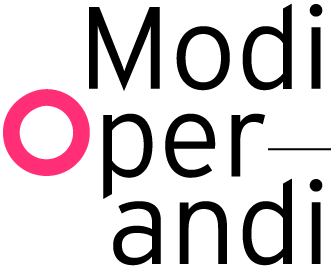INTUITION
Where, how and why do we begin?
In prose, painting, music and architecture alike, where do ideas come from?
For the lyrical poet Rainer Maria Rilke ‘the first line is always given’. This unassailable call from the ‘angelic orders’[1] ignites the poetic imagination. Similarly, the psychoanalyst Wilfred Bion rather wonderfully proposes that ideas are looking for thinkers to think them. In both instances, the artist is a host to, and is immersed in, an atmosphere of creative thought or noosphere.[2] The artist, or in our case architect, variously acts as an agent, antenna, transmitter or butterfly catcher. Others, in contrast, including the mathematician Jacques Hadamard, suggest a more grounded hop, skip and jump from preparation and incubation leading to a moment of illumination and subsequent verification. This is a process of relentless analytical excavation and observation, where hard won inspiration favours the prepared.
In her own search for where to begin, rather delightfully Ardeshana turns to the unfettered, natural imagination of the ‘child’s gaze’ in order to haul from the darkness one layer of understanding latent within her location in Bucharest. This is a move that of course is tangible in that the traces of the Roma children at play are used to incise the ground as an initial design move, but is all the more intriguing when read figuratively. As implied in the term Roma, the children occupy a liminal, betwixt and between place and in casting objects across the landscape in an imaginative arc, the children are both coupled to the ground and travel freely across and above it. As Ardeshana acknowledges, this gaze was the most difficult to assimilate (or ground) within her proposal and there are two points which we can extract here. The first is that out of that difficulty a creative leap emerges where the children’s traces flip from plan to section – perspiration begets inspiration. The second is linked to the word play itself and suggests a wider pedagogical issue. For most of us, the word ‘play’ is comfortably associated with children, less so perhaps with the (apparently) earnest endeavours of architecture both in practice and the academy. More often than not we find ourselves as designers caught in a binary stand-off between the rational, pragmatic and purposeful, andthe poetic, intuitive and playful processes of imagination. Arguably the dominance of the former reflects a cultural milieu which owes much to the philosophical consequence of the Enlightenment (perhaps Endarkenment might be a better term). This is an argument developed in Ian McGilchrist’s The Master and His Emissary in which he looks to the neurologically model of left brain/right brain to suggest that we live in the grip not only of a ‘divided brain’ but also a psychic usurping of the natural regulative capacity of the right hemisphere by the left side. The crisp allure of the lucid favoured by many an academic institution overlooks and diminishes the liberating nuances of the ludic, intuitive imagination.
One of the central tenets of Jung’s model of the human psyche is the creative potential of holding (and enduring) the tension between two opposites. The intensifying of this conflict is at the heart of the hard, transformative toil of the therapeutic encounter and the libidinal[3] drive to psychic wholeness. This is a process which acknowledges the coexistence, reconciliation, and possible transcendence of those opposites. As implied in its title, Jung’s essay ‘Two Kinds of Thinking’ [4] postulates two modi operandi, namely direct and fantasy thinking. To put it differently, Jung argued for the acceptance of physical and psychic truths and the need for both in our collective and individual lives. Indeed, in his own life Jung wrestled with a kind of glorious tension between scientism and mysticism. E.F. Shumaker’s notion of divergent and convergent thinking has some parallels with Jung’s model and the beating pulse between fantasy and resolution will be familiar to many an architectural thinker. As implied in the opening quotation, the capacity to integrate intuition and intellect lays at the core of the creative act. This is anything but ‘child’s play’.
